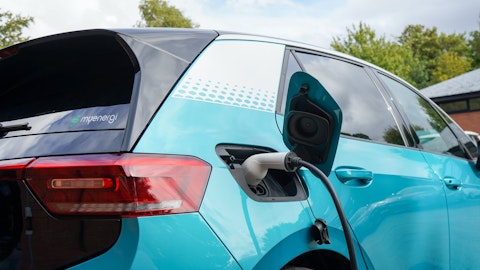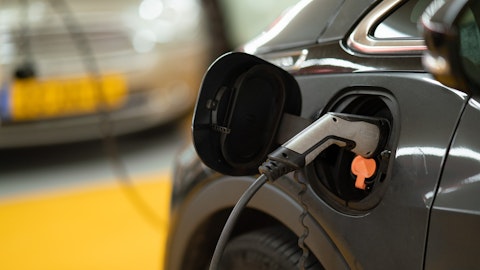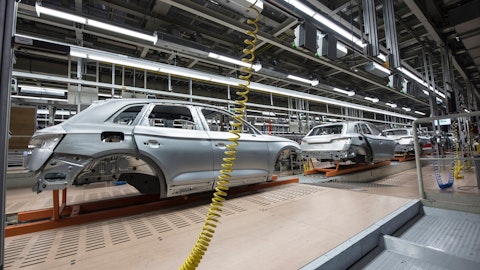As you can see in the past few days, the price of lithium carbonate has already reached RMB400,000 per ton. And we believe the long-term trend is still for the price to go down, and we’ll continue to work with suppliers to negotiate a good term. But there’s not much details I can share at this point.
Tim Hsiao: Thank you very much for the detailed update. Thank you.
Operator: The next question comes from Paul Gong with UBS. Please go ahead.
Paul Gong: So my first question is regarding the gross margin. I think for this quarter, the vehicle gross margin has been 20.0%, which is about one percentage point lower than second quarter and two percentage points lower than first quarter. I think just now Mr. Li Xiang has mentioned it was due to the product mix change. But my understanding is L9 contributed about 60% of the volume for this quarter, which should be positive for the margin. Is that due to the initial ramping up stages? Or is there any other reasons you can share? This is my first question.
Tie Li: Thank you, Paul. This is Johnny from the company. First, the gross margin is healthy and consistent with our guidance. And starting from the fourth quarter, our revenue and gross margin and gross profit is a mix of different product offering. And the majority of the sales volume comes from the L9 and the L8 and both products is under the ramping-up period. As you know, our supply chain needs to ramp-up — of some period and to release the gross margin — the cost down in the coming quarters. And our L Series platform, the overall gross margin is 25% with material deliveries in the future, monthly deliveries. Thank you.
Paul Gong: So my second question is regarding to your upcoming pure electric, perhaps among NPV. I understand the selling point might be fast charging, but we also see some competitors, some peers fast-charging BEV models recently launched, didn’t really met the expectation. So how should we define our products by maintaining the competitive lease while trying to achieve certain margins hopefully are comparable to our existing EREV products?
Xiang Li: So I answer this question on three levels. So I start off with why we decided to build REVs in the first place. It was really two things, right? One is because battery costs are very high. And second was charging was difficult at the time for electric vehicles. It was not only difficult to find charging stations but also very slow to charge. So moving over to EVs. We also intend to solve the three issues. The first one is about charging. With REVs, our strategy has been to use gas on highways and use electricity in the local environment. So EV, we saw the same issue by charging rapidly, charging 400 kilometers of range in 10 minutes, which is very comparable to gas cars. But that’s not the complete picture. It’s like when we had 4G mobile phones, if we don’t only have 2G networks, it still wouldn’t work.
So another piece of the puzzle is infrastructure. So with car, charging capabilities and infrastructure, we are able to provide a level of charging experience comparable to REVs or gas vehicles. And second one is cost. As you can see, we’ve invested a lot on our 800-volt high-voltage architecture as well as our own in-house silicon carbide factory. And many of these innovations combined allow us to significantly increase the efficiency of our EV architecture. Compared to 400-volt IGBT systems, we observed almost 15% of energy efficiency compared to similar models of 400-volt architecture. And that saves a significant amount of battery and therefore, cost of the vehicle. And the third level I want to talk about is product. I can assure you that on our EV product lineup, we’ll be able to provide a similar level of product and experience, differentiation that significantly exceed our user expectations, even more so than our EV models.
Paul Gong: Thank you so much.



